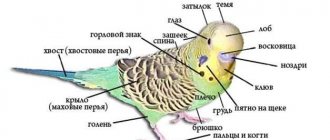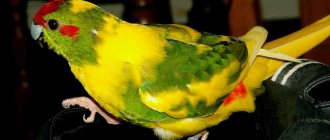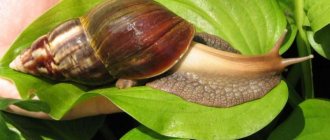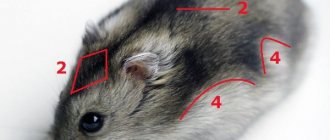How long do parrots live on average?
In the wild, parrots have many natural enemies, and their daily life is full of dangers. The lifespan of a bird in the jungle depends on many factors: the quality and quantity of drinking water, the number of predators, and climatic conditions. Therefore, free birds rarely celebrate their fifth anniversary in full health, and half of the individuals do not live to reach this age.
Budgerigars that live at home feel completely different. Despite the restriction of freedom, their living conditions are radically different from their wild counterparts. Proper nutrition, clean water (as much as you want), the absence of pathogens of dangerous diseases and predators, physical activity allow domestic “butts” to live to a very respectable age of 10-15 years. The ability to bear offspring also lasts for a very long time.
But even in captivity, a parrot can die prematurely. This mainly happens due to the carelessness of the owners. A pet can die at home for several reasons (except old age):
- was sick and did not receive help on time;
- a nimble parrot escaped through the window;
- chewed wires and died from electric shock;
- contracted a fatal infection;
- broke against glass or mirror;
- was seriously injured;
- fell ill and died from poor nutrition.
Long-living parrots are also known in the world. The oldest representative of this species reaches 21 years of age. The old man saw and heard poorly at the end of his life, but remained active, playful and enjoyed communicating with his owners.
Lifespan of wild budgies
In Australia, among the wild, the life expectancy of budgerigars ranges from 4 to 8 years.
Leading a nomadic lifestyle, birds have to travel long distances to find food and water, and the slightest illness or weakness puts the wavy in mortal danger.
In the homeland of parrots, in flocks of parakeets, epidemics break out, the cause of which is not fully understood by scientists due to the fact that each time the culprits are different natural disasters or a combination of circumstances.
Photo: Jim Bendon
For example, in Australia, water often becomes contaminated, which causes mass deaths of birds. Therefore, organizations have been created that try to provide wild budgerigars with sources of clean water, especially during periods of drought. People build artificial reservoirs and install drinking bowls in various parts of the continent.
The presence of predators also makes life difficult for wild parrots.
But by their nature, wavy fish have strong immunity, which allows them to quickly restore the population.
How to determine the age of a chick when purchasing
When you first come to the bird market, you can become an easy prey for scammers and buy a retired budgerigar. Seeing your ignorance, cunning sellers will definitely take advantage of this to make money. But the young chick will live longer and is more capable of learning. Here are a few basic rules that will help you distinguish a young bird:
- Take a look at the parrot's head. In chicks, wavy black and white plumage begins immediately behind the growth that is located above the beak (cere). At the age of 3 months, budgies lose this beauty and acquire lighter, but now real straight feathers. Here it should be taken into account that some light-colored individuals may not have a wavy pattern even in childhood.
- The eyes clearly indicate the age of the chick. Young parrots have a dark iris color. As they grow older, the eyes lighten, becoming a light gray color. If you cannot see it and doubt arises, ask the seller to turn the bird towards the light. When the pupil constricts, the color of the iris will be more clearly visible.
- Beak. Those babies who have recently left the parent's nest have a small dark spot on their beak. Representatives with a dark color lose it by one and a half months, and light budgerigars even earlier - three weeks after birth. In mature individuals, the beak is uniformly colored.
These are the most obvious differences between older birds and young ones. The remaining characteristics cannot be considered distinctive, since they are individual for each individual.
To insure against possible mistakes, it is worth familiarizing yourself with the most common tricks of dishonest sellers. They will assure the potential buyer that they are right, and they are unlikely to answer honestly when asked how old the bird is. Most often they use the following arguments:
- The shorter the tail, the younger the chick: the feathers simply have not grown yet. It's a delusion. Even adults sometimes lose their longest tail feathers. Then they grow back, but at the time of sale such a bird can easily be passed off as a chick.
- The absence of continuous feather cover indicates that the budgerigar has recently hatched. This is also not true. By 6-7 weeks of a chick’s life, the plumage is fully formed. If bald spots are observed, then the bird is old or sick. In young individuals, the absence of feathers in small areas is a sign of close relationship between the parents. The genetic pool of such a bird is not very good, it will not produce healthy offspring, and it itself will not live long.
- “Butt” is so small that he hasn’t even learned to fly yet. This is wrong. All parrots that do not have congenital wing pathologies begin to fly by two months. No matter how old a bird is, if it does not try to fly, then this is a clear indicator of retirement age or exhaustion (illness).
- The smaller the chick, the younger it is. Within a species, the body size of different individuals can vary widely. On average, the height of a budgerigar is about 19 cm. But there are birds that are larger and smaller (both males and girls). Therefore, when choosing, you cannot rely only on size.
And one more warning: after changing the plumage and lightening the iris, it is impossible to determine the actual age of the parrot. Here we can only hope for the seller’s honesty. With equal probability, you can buy both a six-month-old feathered friend and an elderly one.
How long can budgies live without food?
It is undesirable to engage in dangerous experiments, leaving pets for a long time without food. Even short-term fasting is fraught with consequences for them. The answer to the question of how long budgerigars live at home, accidentally left without food, worries people who often travel on business trips. In the absence of a grain mixture, the critical period is 2-3 days. The worst option is to leave your pets without water; in this case, death often occurs within a day due to the birds’ accelerated metabolism.
Healthy birds live longer
When a small chick is born healthy, without physical or anatomical pathologies, then it has every chance of becoming the next long-living record holder. If it is not possible to show your budgerigar to a veterinarian before purchasing, you need to pay attention to its appearance and behavior.
An elderly or sick pet will sit on a perch, ruffled and not showing interest in the world around it. Shriveled wax, lethargy, peeling and scales on the beak are signs of serious illness. Most likely, such a bird will require long-term treatment. Healthy feathered youth usually flutter around the cage and chirp cheerfully.
Light is the source of life for the budgerigar
In their natural habitat, budgies wake up at dawn and fall asleep at sunrise, so they receive a sufficient dose of sunlight.
Lighting plays a huge role in the life of birds. Staying awake at night can adversely affect your feathered pet's lifespan. In winter, the duration of daylight should be 10-12 hours, and in summer - 12-14 hours. If you still have budgerigar chicks, the lighting should be on for 14-16 hours. Stores sell special lamps that imitate the natural lighting necessary for the normal development of birds.
What can be done to extend the life of a parrot
In order for your winged pet to live happily ever after, you must follow the rules of feeding and care.
What to feed
The quality of food and its usefulness directly affects how many years a parrot will live. His diet must necessarily contain nutrients and vitamins in strictly defined proportions. To feed the chick, you can use a ready-made store-bought mixture, or you can prepare it yourself. Main components:
- millet (50% by weight of the entire mixture);
- oats;
- canary seed;
- sesame;
- flax seeds;
- sunflower seeds (not a lot).
This grain mixture can be given to a parrot who lives in a cage, two teaspoons daily. Dandelion, lettuce, plantain, and bluegrass are used as a supplement to the diet. Vegetables and fruits will also be beneficial, especially green and orange ones.
You can cook crumbly porridge from millet or crushed rice for your pet. But such a menu should be from childhood; adult birds will not eat it. During the mating period, it is useful to give the males a finely chopped boiled egg.
You cannot feed the bird what it likes best. Many pets react enthusiastically to sweet cookies, but you should not give them too often - this will harm the body of the “butt”. Any delicacy is consumed in limited quantities. It’s good if an apple or a piece of carrot serves as a treat.
What microclimate to provide
At home where the chick lives, it is necessary to maintain a comfortable temperature, about 20 ºС. Stuffiness, drafts, and cold have a negative impact on the pet’s well-being. The cage should be placed at some distance from the window and away from the central heating radiators.
Lighting
Proper lighting plays a big role in keeping budgies at home. The cage should be in a bright place so that daylight hours for the bird last 14 hours in summer, and at least 10 hours in winter. In the evening, artificial lighting must be turned on, otherwise the pet will not eat enough food, become weak and depressed.
In their natural environment, parrots wake up at dawn and fall asleep at sunset. But at home, this regime is violated. In the evening, the bird will not be able to fall asleep, since people are still active, constantly walking, talking, and making noise. If, obeying instincts, the parrot gets up with the sun and begins to chirp loudly, you can cover the cage at night with a thick, but breathable fabric. This will help both the feathered pet and its owners get enough sleep.
Purity
There should always be perfect order in a parrot's cage. The drinking bowl, feeder and floor should be washed regularly. Accessories and toys are placed so that feces do not fall into the pet’s water and food. It is useful to bathe even your feathered friend. Parasites do not like clean feathers, and this is very good for health.
Proper nutrition is the key to a healthy budgie
Some owners say that their feathered pet eats everything: cookies, sausage, rolls, paper - and everything is fine with him. But it's not right. If nothing happens to the parrot now, this does not mean that in the near future it will not negatively affect its health. Some die immediately, others a little later.
The bird will not be able to eat a balanced diet on its own, and it does not matter whether it is a wild or domestic budgie. Therefore, the first thing you need to do is purchase quality food. The norm for one wavy is 1.5-2 teaspoons per day. But grain alone will not be enough for proper nutrition. Parrots still need vitamins in the form of fruits and vegetables. It is very useful to sometimes give sprouted food - a storehouse of vitamin E. It is worth studying thematic forums about how much, how and what to feed budgies, they contain a lot of useful information.











